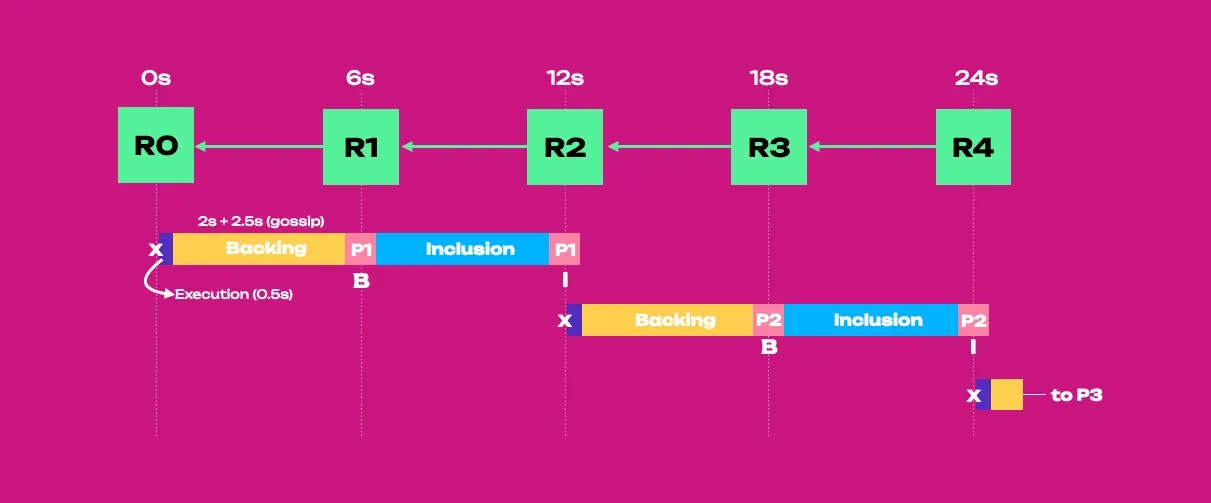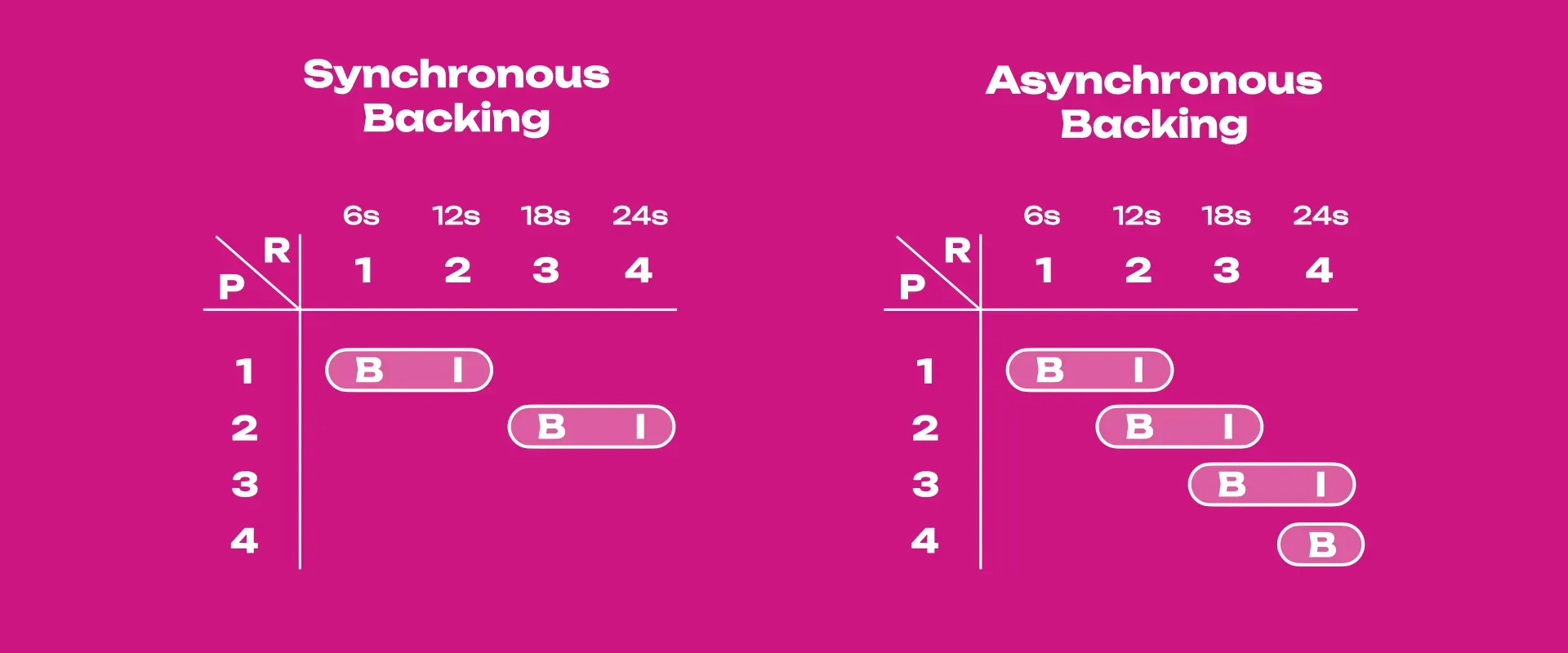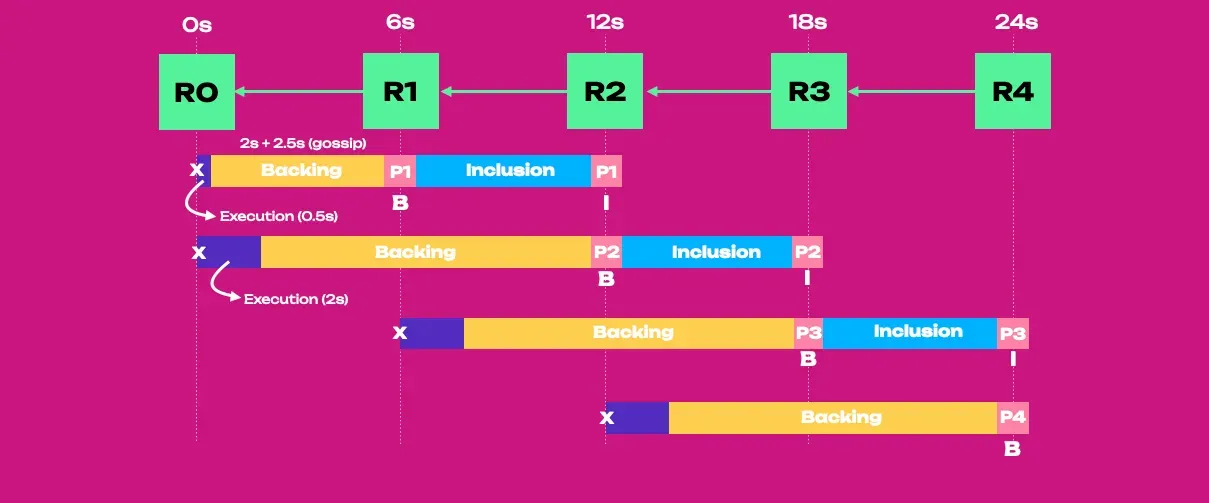Improving the Performance of Parachains
Introduction
The implementation of asynchronous backing is an innovative solution that brings efficiency and scalability to parachains. This tool allows the generation and backup of parablocks to be more fluid, all to improve network performance.
In this opportunity, we will explore whatasynchronous backing is, what advantages it brings and the challenges it might face.
What is Asynchronous Backing?
Asynchronous backing refers to the ability of collators to generate and back parablocks (parachain blocks) independently of the relay chain. This means that the process of inclusion and verification of new blocks is not strictly tied to the forward time of the main chain. Thanks to this functionality, parablocks can be included every 6 seconds, compared to the 12 seconds required in synchronous backing.

Advantages of Asynchronous Backing
Increased Performance: With the inclusion of parablocks every 6 seconds, the system doubles the processing possibilities, which translates into a significant increase in throughput. The parachains can thus handle up to four times more data in each parablock.
Efficient Pipelining: Collators have the ability to build new parablocks while backing up the old ones. This allows multiple parablocks at different stages of production, optimizing execution time to the maximum.
Flexibility in Building Blocks: By being able to use contexts of segments not yet included, collators can create new parablocks more efficiently. This not only improves production, but also increases resilience to potential network problems.

Comparison between Synchronous and Asynchronous Backing

Inclusion and Verification Process
For a parablock to be considered valid, it must meet certain requirements. First, the collator adds validation information and creates a candidate receipt, which is sent to the relay chain. Then, the validators review this information, and if it is approved by a third of them, the parablock is considered endorsed.
Once endorsed, the parablock is included in the relay chain, marking a fundamental step for its validation in the system. This forms the skeleton of the inclusion and verification process in the Polkadot architecture.

Challenges and Considerations
Despite the advantages it offers, asynchronous backing faces certain challenges. One of the most relevant is the need to perform exhaustive performance tests to ensure that everything works correctly. It is also crucial to manage the risks associated with asynchronous backing. Therefore, it is essential that thorough performance metrics are performed before implementing this technology in a production network.
For all these reasons, asynchronous backing represents a significant advance in Polkadot's architecture. By enabling a marked improvement in the efficiency and data management capabilities of parachains, this functionality is projected to be a crucial change in the way interconnected blockchains operate. With the continued development of this technology, we could be looking at a transformation of the blockchain ecosystem as we know it.
To stay up-to-date on asynchronous backing and its implementation in Polkadot, you can check out the following resources:
Asynchronous Backing Specification
Tweet from Polkadot about Asynchronous Backing

Comments